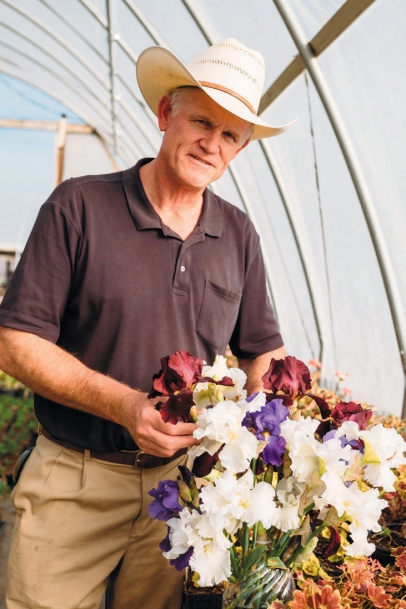A Day for Daylilies
Prioritizing locally grown cut flowers is a great way to support Ventura County’s farms, and seeking out locally grown plants for gardening and landscaping is a double win: It supports local agriculture while also helping gardeners find plants appropriate to their climate.
At Greenwood Daylily Gardens in Somis, John Schoustra and his team grow over 1,000 varieties of daylilies, irises, cannas, geraniums and pelargoniums. Schoustra estimates he’s grown over 5,000 varieties of daylilies in his career, and sells about 100 varieties at a time.
Why daylilies?
My practical side liked that daylilies were sort of the “denim jeans” of the plant palette: easy to care for, versatile and popular from Alaska to Florida. My designer side liked all the possibilities. At the time, nurseries only sold daylilies by color, not names, and only offered three colors, so tapping into all the new daylily sizes and colors gave me and my customers a lot more crayons to draw with!
What recommendations do you have for people as they plan home gardens?
You first have to think about the setting, the exposure—where is it? Something near the coast is going to have different needs than something inland. Black Eyed Sun daylilies, for example, do well in soggy and salty areas; the Rojo Alto daylily, not so much. You talk microclimate before you talk aesthetic. And then you think about trees. Everyone thinks about flowers, but every garden starts with trees.
Basically, you are designing an outdoor room or rooms. When designing a home you start with the size, shape and functions of the rooms before picking out the furniture. In the garden, trees, along with actual walls, help define the size, shape and microclimate (sun/ shade) of the rooms. Shrubs and flowers furnish the garden rooms.
A refreshing change in the last year is that bees have become fashionable. People used to ask for gardens with year-round flowers but no bees, because, well, they were afraid of bees.
How are commercial nurseries here working to conserve water?
I see a change in plant palettes for a lot of nurseries. We’re growing more irises, which are extremely drought tolerant. Our big response has been terracing all our beds. We’ve created terraces that slow down rainwater that comes onto the property. When it’s not raining, the fact that we’re on terraces instead of a steady slope means we need less water. We’ve probably reduced our water usage by 35% as a result of the terraces.
What is the relationship between flower farmers and food farmers in Ventura County?
There’s quite a bit of overlap. In our case, the majority of our land is in avocados. We haven’t made any money off of them in seven years, but we wanted to convert to organic. So in a sense, the nursery supported the organic conversion of the avocados.
There’s an ebb and flow of work in the nursery and work in the orchard. We make compost in the nursery that we’re able to use in the orchard. Our goal is to find blooming perennials for use in the landscape. That’s pollen and nectar that can help feed pollinators. Because we’re in the middle of avocado orchards, that keeps the bees happy. Avocado trees need pollination, but only bloom briefly. The year-round blooms in our nursery keep bees around to pollinate our trees and our neighbors’.
Greenwood Daylily Gardens is open to the public every Saturday between April and June. Check greenwoodgarden.com for hours.















